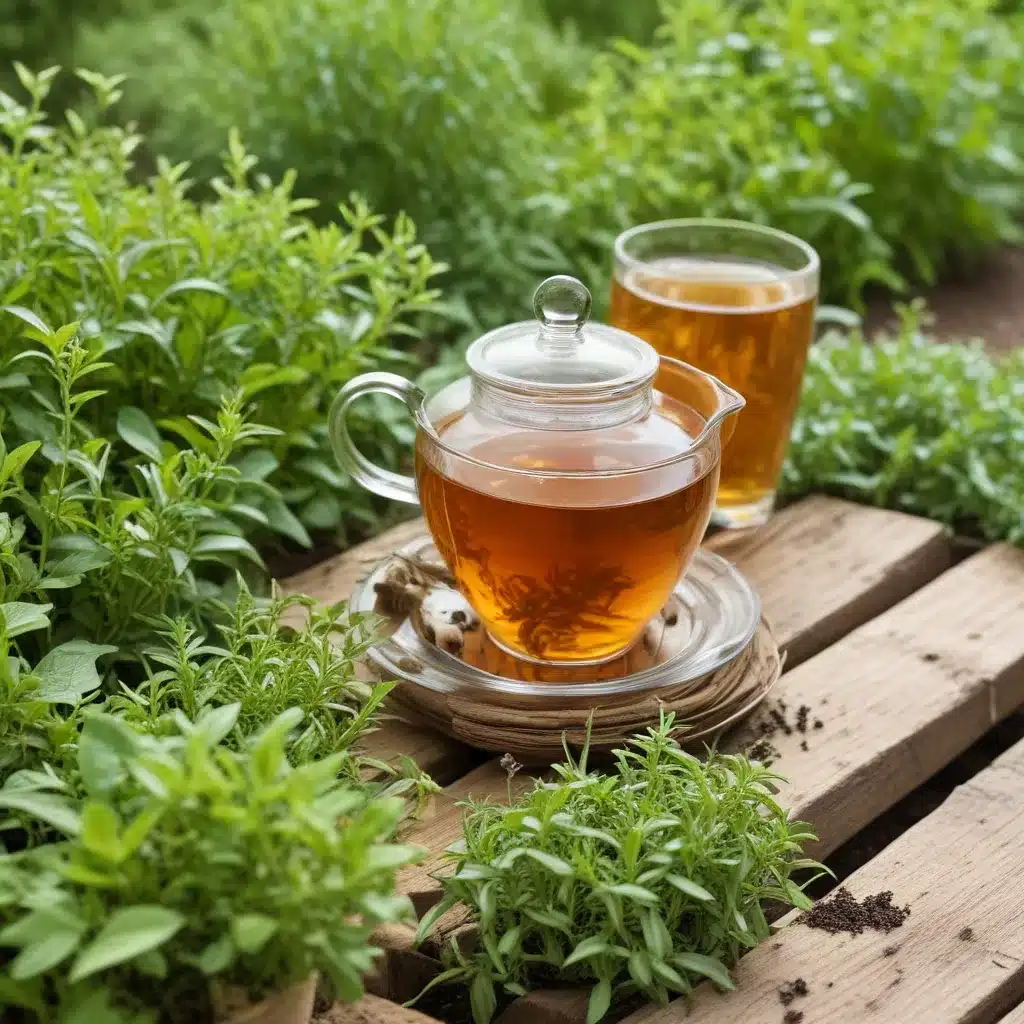
Are you a tea enthusiast eager to explore the world of homegrown herbs and florals? Crooked Pines Farm is here to guide you through the process of cultivating your very own backyard tea garden. From selecting the perfect plants to harvesting and brewing, we’ll cover everything you need to know to become a tea-growing pro.
Tea Garden Essentials
Choosing the Right Tea Plants
The foundation of any thriving tea garden starts with selecting the suitable plants. While the classic Camellia sinensis (true tea plant) is a popular choice, a diverse array of herbal infusion plants can also make delightful teas. Consider adding favorites like chamomile, peppermint, lemon balm, hibiscus, and lavender to your garden.
When selecting your tea herbs, think about the flavors and medicinal properties you’d like to incorporate. Do you need a soothing bedtime tea? Try growing valerian and passionflower. Seeking an energizing morning brew? Yerba mate and guayusa could be perfect additions. By carefully curating your plant selection, you can create a tea garden tailored to your unique tastes and wellness goals.
Planting and Caring for Tea Herbs
Whether you opt for raised beds, containers, or in-ground planting, your tea herbs will thrive in well-draining, nutrient-rich soil. Incorporate plenty of compost and aged manure to provide a healthy foundation. Herbs in the mint family (like peppermint and lemon balm) prefer drier conditions, while Apiaceae plants (such as fennel and dill) appreciate more consistent moisture.
Proper spacing is key to avoiding overcrowding. Most herbs require 12-18 inches between plants, though trailing varieties like creeping thyme can be planted more closely. Remember to situate your tea garden in a spot that receives at least 6 hours of direct sunlight per day.
Regular pruning and deadheading will encourage bushy growth and prolonged harvests. Don’t be afraid to snip off leaves and flowers regularly – the more you harvest, the more your plants will produce.
Harvesting and Drying Tea Leaves
Timing is everything when it comes to harvesting your tea leaves and flowers. For optimal flavor and potency, aim to collect your bounty in the morning, after the dew has dried but before the heat of the day sets in. Gently snip or pinch off the top 2-4 leaves, being careful not to damage the plant.
Once harvested, your tea ingredients will need to be dried before storage and brewing. Air-drying on racks or in paper bags is a simple and effective method. Alternatively, you can use a dehydrator or oven set to the lowest temperature. Properly dried leaves and flowers should be crisp and easily crumbled.
Tea Herb Varieties
Camellia Sinensis (True Tea)
While not always the easiest to grow in home gardens, the Camellia sinensis plant is the source of classic black, green, white, and oolong teas. This evergreen shrub thrives in acidic, well-draining soil and partial shade. Harvest the young, tender leaves and buds for the best flavor.
Herbal Infusion Plants
A wide variety of herbs, flowers, and even roots can be used to craft delightful herbal teas, also known as tisanes. Some top picks include:
- Chamomile – Soothing, subtly sweet花
- Peppermint – Refreshing, energizing
- Lemon Balm – Bright, citrusy
- Hibiscus – Tart, vibrant red infusion
- Lavender – Calming, floral
Don’t be afraid to experiment with less common options like rose hips, dandelion root, and tulsi (also known as holy basil).
Blending Unique Tea Mixes
One of the joys of growing your own tea garden is the ability to craft custom blends. Try pairing complementary herbs and flowers, or create unique flavor profiles by adding spices, fruits, or even edible flowers. Get creative with ingredients like ginger, cinnamon, orange peel, and rose petals.
Garden Design Considerations
Layout and Spacing
When planning your tea garden layout, group plants with similar needs together to simplify care. Herbs in the mint family should be isolated to prevent aggressive spreading, while Apiaceae varieties can be intermixed. Incorporate companion planting strategies, using flowering plants to attract beneficial insects and deter pests.
Companion Planting
Certain herbs and flowers make excellent companions for your tea plants. Marigolds and nasturtiums can help repel aphids and other unwelcome guests. Borage and bee balm will draw pollinators to your garden. Calendula and chamomile can help suppress weeds and improve soil health.
Aesthetic Appeal
Don’t underestimate the beauty of a well-designed tea garden. Incorporate visual interest with colorful blooms, varying textures, and strategic plant placement. Consider adding decorative elements like trellises, garden art, or whimsical fairy gardens to delight the senses.
Preparing Homemade Tea
Drying and Curing Techniques
Proper drying and curing are essential for preserving the flavor and potency of your homegrown tea ingredients. After harvesting, spread leaves and flowers in a single layer on racks or screens, ensuring good air circulation. Alternatively, you can use a food dehydrator set to the lowest temperature. Once completely dry and crisp, store your tea ingredients in airtight containers in a cool, dark place.
Blending and Flavoring
Experiment with blending your own unique tea creations. Start by mixing complementary herbs and flowers, then add spices, fruits, or other flavorings to create custom flavor profiles. A simple mortar and pestle can be a valuable tool for gently crushing and combining your ingredients.
Brewing the Perfect Cup
When it’s time to enjoy the fruits of your labor, focus on brewing the perfect cup of tea. Use freshly drawn, filtered water and the appropriate water temperature for your specific tea type. Steep for the recommended time, then pour and savor. Don’t forget to compost your used tea leaves – they make excellent soil amendments for your garden!
Whether you’re a seasoned tea enthusiast or a novice gardener, growing your own tea herbs can be a rewarding and enjoyable experience. By cultivating a thriving backyard tea garden, you’ll have a steady supply of fresh, flavorful ingredients to craft homemade infusions tailored to your unique tastes. So what are you waiting for? It’s time to get growing!


